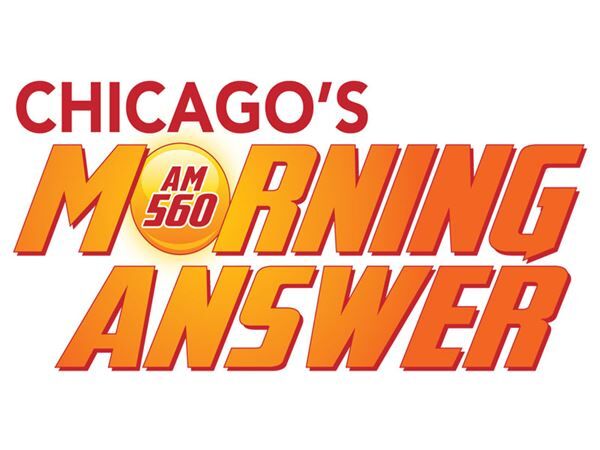FACT FOCUS: Trump paints a grim portrait of Portland. The story on the ground is much less extreme
News > Politics & Government News

Audio By Carbonatix
8:11 PM on Thursday, October 9
By CLAIRE RUSH AND MELISSA GOLDIN
PORTLAND, Ore. (AP) — President Donald Trump, members of his administration and conservative influencers painted a bleak portrait of Portland, Oregon, at a roundtable event at the White House Wednesday, alleging that the city has been besieged by violence perpetrated by “antifa thugs” and that it is essentially a war zone.
“It should be clear to all Americans that we have a very serious left-wing terror threat in our country, radicals associated with the domestic terror group antifa that you've heard a lot about lately," Trump said.
But the reality on the ground in Portland is far from the extremes described at the White House.
Here's a closer look at the facts.
TRUMP: "In Portland, Oregon, antifa thugs have repeatedly attacked our offices and laid siege to federal property in an attempt to violently stop the execution of federal law.”
THE FACTS: There have been nightly protests outside the U.S. Immigration and Customs Enforcement building in Portland for months, peaking in June when police declared one demonstration a riot. There have also been smaller clashes since then: On Labor Day, some demonstrators brought a prop guillotine — a display the U.S. Department of Homeland Security blasted as “unhinged behavior.”
The protests at the ICE facility, which is outside downtown, have largely been confined to one city block and have attracted a range of participants. During the day, a handful of immigration and legal advocates mill about and offer copies of “know your rights” flyers. Daytime marches to the building have also included older people and families with young children. At night, other protesters arrive, often using megaphones to shout obscenities at law enforcement.
While the administration claims protesters are antifa, short for “anti-fascists,” antifa is not a single organization but rather an umbrella term for decentralized far-left-leaning militant groups that confront or resist neo-Nazis and white supremacists at demonstrations.
The building was closed for three weeks from mid-June to early July because of damage to windows, security cameras, gates and other parts of the facility, federal officials said in court filings submitted in response to a lawsuit brought by Portland and Oregon seeking to block the Trump administration’s deployment of the National Guard. The building's main entrance and ground-floor windows have been boarded up.
Protesters have also sought to block vehicles from entering and leaving the facility. Federal officials argue that this has impeded law enforcement operations and forced more personnel and resources to be sent from other parts of the country.
However, in the weeks leading up to the Trump administration’s move to federalize 200 members of the Oregon National Guard on Sept. 28, most nights drew a couple dozen people, Portland police correspondence submitted to the court shows.
Protests began growing again after the National Guard was ordered to Portland over the objections of local and state officials.
Since June, Portland police have arrested at least 45 people, with the majority of those arrests taking place in June. Meanwhile, federal prosecutors have charged at least 31 people with crimes committed at the building, including assaulting federal officers; 22 of those defendants had been charged by early July.
TRUMP: “The amazing thing is, you look at Portland and you see fires all over the place. You see fights, and I mean just violence. It's just so crazy. And then you talk to the governor and she acts like everything is totally normal, there's nothing wrong."
THE FACTS: Fires outside the building have been seen on a handful of occasions. In June, a man was arrested after he lit a flare and tossed it onto a pile of materials stacked against the vehicle gate, according to federal prosecutors, who said the fire was fully extinguished within minutes.
More recently, social media videos of the Labor Day protest showed a small fire lit on the prop guillotine. And in early October, following the announcement of the National Guard’s mobilization, videos on social media showed a protester holding an American flag on fire — and conservative influencer Nick Sortor stomping the fire out.
There have also been some high-profile confrontations between protesters and counterprotesters. In late September, conservative media figure Katie Daviscourt was hit in the face with a flagpole and suffered a laceration, police logs show. In early October, Sortor, who has more than 1 million followers on X, was arrested along with two other protesters following an altercation. Local prosecutors ultimately declined to charge him after finding that one of the protesters had pushed him and that “any physical contact he had with other persons was defensive in nature."
While Portland police correspondence submitted to the court notes a few instances of “active” energy and disturbances between protesters and counterprotesters, many entries describe low energy and “no issues” in the weeks leading up to the National Guard's mobilization.
A new tongue-in-cheek website has also launched in recent days: isportlandburning.com shows multiple live cameras in the city and near-real-time data from the city’s fire department.
TRUMP: “I don’t know what could be worse than Portland. You don’t even have sewers anymore. They don’t even put glass up. They put plywood on their windows. But most of the retailers have left.”
THE FACTS: This is false. Portland does have sewers — its sewer and stormwater system “includes more than 2,500 miles of pipes, nearly 100 pump stations, and two treatment plants,” according to the city's website. The largest sewer pipe is the East Side Big Pipe, which has an inside diameter of 22 feet, while the smallest are only six inches in diameter.
Local and state officials have suggested that many of Trump’s claims appear to rely on images from 2020. Portland famously erupted in more than 100 days of large-scale unrest and violent protests after George Floyd's killing by Minneapolis police that year. Police were unable to keep ahead of splinter groups of black-clad protesters who broke off and roamed the downtown area, at times breaking windows, spraying graffiti and setting small fires.
But Portland has largely recovered from that time. Under a new mayor and police chief, the city has reduced crime, and the downtown — which has more than 600 retail shops, many with glass storefronts — has seen a decrease in homeless encampments and increased foot traffic. This summer was reportedly the busiest for pedestrian traffic since before the coronavirus pandemic, and a recent report from the Major Cities Chiefs Association found that homicides from January through June decreased by 51% this year compared to the same period in 2024.
Gov. Tina Kotek said she told Trump during a phone call that “we have to be careful not to respond to outdated media coverage or misinformation that is out there.”
KRISTI NOEM, Homeland Security Secretary: "I was in Portland yesterday and had the chance to visit with the governor of Oregon, and also the mayor there in town, and they are absolutely covering up the terrorism that is hitting their streets.”
THE FACTS: Noem did visit Portland on Tuesday and met with Kotek and Mayor Keith Wilson. Both officials disagree with Noem’s narrative.
Kotek has repeatedly said that “there is no insurrection in Portland,” including in conversations with Trump and Noem, and that the city does not need “military intervention.” She has also continually called for any protests to be peaceful and said that local law enforcement can “meet the moment.” After Trump threatened to send the National Guard to Portland, Wilson said in a statement that the city has protected freedom of expression while “addressing occasional violence and property destruction.”
Observations on the ground in Portland support Kotek’s statement. While the nightly protests at the ICE facility have been disruptive for nearby residents — a charter school relocated this summer to get away from crowd-control devices — life has continued as normal in the rest of the city. There is no evidence of the protests in other areas of the city, including the downtown area about two miles away.
Portland residents have taken to social media to push back against the Trump administration’s statements about their city with the hashtag #WarRavagedPortland, posting photos and videos that show protesters in inflatable unicorn and frog costumes, along with people walking their dogs, riding their bikes and shopping at farmers markets.
___
Find AP Fact Checks here: https://apnews.com/APFactCheck.












